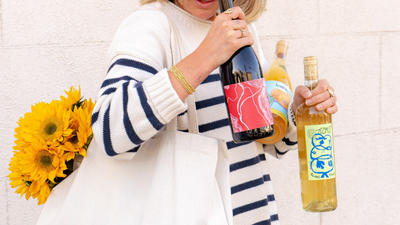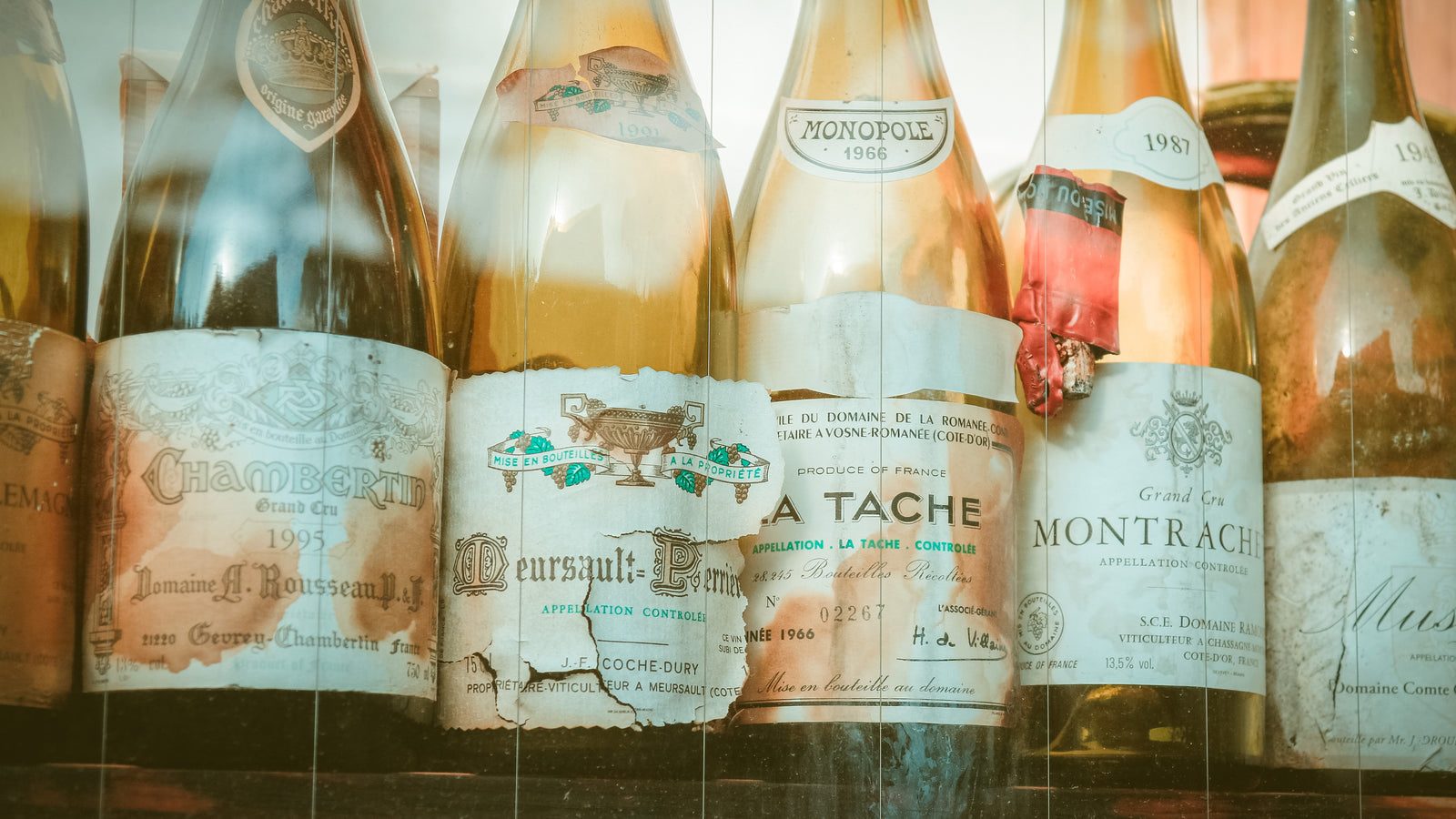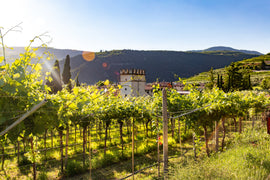I am often asked: how long should you age a wine? The wine writer Matt Kramer says, “Most of today's fine wines—not all, mind you—will reach a point of diminishing returns on aging after as few as five years of additional cellaring after release…. Today's wines are far more drinkable, far more gratifying, far more rewarding when drunk younger than their counterparts of 20 years ago. Cleaner winemaking, more scrupulous attention to fermentation methods that minimize tannins, more careful filtering and a host of other winemaking and cellaring techniques have also dramatically transformed wines.” Our wines this month are delicious as soon as the corks are pulled, although white wines from the Alto Adige have been known for their aging potential. Our red wine already has the advantage of having a few years of bottle age, but also possesses all the elements necessary for cellaring. How these wines will age (while somewhat predictable) is anyone’s guess, but one thing is certain, both wines will continue to delight your organoleptic senses for at least the next few years (if you have any bottles left).
Trentino-Alto Adige is an eclectic mix of Austrian accuracy and Italian spirit. The region is one of the smallest wine-growing areas in Italy and is incredibly diverse with climate and soil variations, even within its smallest localities. The topography of the region’s winegrowing area is like a complex puzzle. Vineyards are planted with different exposures and varying elevations, have changing microclimates, and are composed of some of the most varied soil types ranging from volcanic porphyry, to weathered primitive rock soils composed of quartz and mica, to limestone and dolomite, to sandy marl. The lowest vineyards are located at 600 feet and the highest reach 3,250 feet above sea level. The main range of the Alps in the north protects the Alto Adige against cold Alpine winds. Toward the south, the province opens up and benefits from the temperate influences of Lake Garda and the Mediterranean Sea. The region averages more than 300 days of sunshine a year, wide day-night temperature swings, and an average growing season temperature of over 64°F. Although the Alto Adige represents less than one tenth of Italy’s total wine production, it leads the country in wines meriting a DOC (Denominazione di Origine Controllata) designation: 98% of its wines fall into this category.
The Alto Adige Valle Isarco DOC, as the name suggests, is a sub-zone of Alto Adige DOC. The vineyards surround the municipalities of Barbiano, Bressanine, Castelrotto, Chiusa, Fié, Furies, Laion, Naz-Sciaves, Renon, Velturno, Villandro and Varna. The long, narrow valley is one of the biggest valleys in South Tyrol, stretching from the source of the Isarco River at Brennero Pass to Bolzano, where it flows into the Adige River. The Isarco Valley divides the Stubai Alps and the Sarntal Alps from the Zillertal Alps and the Dolomites.
The history of viticulture in the Valle Isarco is ancient. The earliest evidence of winemaking dates from the 5th century BC. During the early Middle Ages, local monasteries took up the practice of viticulture. In 1961, a real advance occurred with the creation of cooperative organizations in Chiusa and Bressanone. The elaborate terraces on the valley slopes were repaired and renovated, and expertise increased in both vineyards and cellars. While cooperatives are still extremely important producers in the region, the step towards independent cultivation and self-marketing by several winemakers has contributed greatly to the increased diversity and greater quality of the region’s wines.
The Prackwieser family has been managing the historic wine farm Gump (Gumphof) in Fiè allo Sciliar for more than 200 years. The building itself, however, goes back as far as 1546. Since 2000, Markus Prackwieser has taken over the family estate. Gumphof is nestled in the steep slopes at the entry of the Isarco Valley. The vineyards of the Gump Hof face southwest, feature a steep 50 – 70% incline, and lie between 400 to 500 meters above sea level. The lime-rich moraine soil rests on solid Bozen quartz porphyry and offers the ideal conditions for the varieties grown here. The five hectares (approx. 12 acres) are planted with Pinot Blanc, Sauvignon, Gewürztraminer, Schiava and Pinot Noir vines. These steep and sunny vineyards are cooled by the mild Mediterranean “Ora” wind from Lake Garda during the day and by the powerful downslope winds from the Dolomites at night. These natural temperature fluctuations create wines with an exceptional complexity and a particular freshness.
Gumphof’s 2018 Weisburgunder is 100% Pinot Blanc. The fruit is sourced from vineyards located at the south edge of the Isarco Valley at the foot of the Schlern massif, with elevations of 400–500 meters above sea level, and with soils composed of chalky moraines on solid quartz porphyry. The grapes are hand-harvested on the steep terraces and then undergo a gentle pressing followed by fermentation in stainless steel tanks. The wine then rests for 6 months on the lees in stainless steel. The 2018 Weisburgunder is a wine that reflects the character of its terroir as well as the talent of the winemaker. When poured in a glass the wine bursts with a purity of fruit that is incredible. Aromas of juicy pears and apricots combine with notes of preserved lemon, ginger, and an enticing hint of minerality that complement the fresh and long, juicy finish. Enjoy this wine by itself as an aperitif, or pair it with shellfish, sushi, risotto with scallops and corn, and Asian dishes from Thailand or Viet Nam.
The 2018 Gumphof Weisburgunder is $22.00/bottle, $237.60/case.
Aragón, a landlocked region in northeastern Spain, is nestled against the Pyrenées Mountains, surrounded by the prime wine regions of Catalonia and La Rioja. The region has a long history of viticulture which dates back centuries and was closely linked to monastery life. Campo de Borja, which lies between the Sierra de Moncayo mountain and the Ebro River valley, is a DO (Denominación de Origen) in the autonomía of Aragón and received its DO classification in 1980. Campo de Borja DO is divided in to three zones based on elevation but is generally characterized by high plateaus and hills with limestone soils. The climate is continental, marked by very little rain and the cold, dry winds that blow down from the northwest. Garnacha dominates the region with approximately 5,000 hectares planted, the oldest dating back to 1890. More than 2,000 of the 5,000 hectares of Garnacha are between 30 and 50 years old. Despite losing much of its population and economic activity since the Spanish Civil War of the 1930’s, the region still nurtures old, head-trained vines in the rocky soils on and around the mountains of the Sistema Iberico range, of which El Moncayo, at 7,592 feet, is the highest peak. In the 1950’s, Campo de Borja growers formed a cooperative winery, which, like so many of its peers, mainly sold bulk wine at low prices for local consumption.
After launching Bodegas Frontonio in Valdejalón, Fernando Mora-Master of Wine, lawyer Francisco Latasa and winemaker Mario López joined forces to launch a second project in Aragón. This time they joined forces with Santo Cristo Cooperative in DO Campo de Borja. Grapes are sourced from wine growers from the cooperative and wines are also made there. The fact that Mario López has been working as a winemaker for Santo Cristo since 2017 was very helpful to establish the terms of the collaboration. The three friends want to recover and show the world some of the most distinctive, dry-farmed, old bush Garnacha vineyards found in the area. Cueva is the Spanish word for cave, and in Ainzón, caves were the wineries of yesteryear, where the perfect, naturally cool conditions provided ideal conditions for winemaking. Cuevas de Arom (Arom is Fernando’s surname backwards) recreates this traditional environment, producing wines in the space formerly occupied by a cement tank under the Santo Cristo Cooperative winery in Ainzón. Accordingly, one of Cuevas de Arom’s slogans reads: “We produce high altitude Garnacha underground”.
Cuevas de Arom’s style is more refined than the powerful, often extracted Garnachas that have become typical in Aragón. After their experience with fermentations in Valdejalón, open tanks are used in Campo de Borja with different skin contact times based on the characteristics of the grapes. Depth and freshness from particularly warm areas are obtained with whole bunch fermentation. “Although tannins are coarser at first, wines made with grape stems evolve more slowly,” says Mora. Aging vessels include concrete tanks and eggs, flexitank eggs, foudres and barrels.
Cuevas de Arom’s 2106 Pedra Forca is a blend of 60% Garnacha and 40% Syrah. The grapes, coming from vineyards planted at 550-700 meters on slate and limestone soils, are harvested by hand. In the cellar, the grapes are first cold-macerated for 48 hours. Then 80% of the grapes are destemmed and along with the other 20% of whole bunches undergo a temperature-controlled (28 ° C) alcoholic fermentation with wild-indigenous yeasts in open casks. After about 2 weeks, pressing follows and the young wine is transferred to concrete tanks for malolactic fermentation and maturation. After more than 1 year the wine is lightly filtered and bottled.
In the nose, Cuevas de Arom’s 2106 Pedra Forca offers aromas of ripe red and black berries, violets, leather, and a hint of smoke. On the palette, the wine reveals intense notes of ripe red and black berries, rosemary, a touch of dark chocolate, and a long finish with ripe tannins and lively acidity. This wine pairs beautifully with dishes such as grilled lamb chops, roasted guinea fowl, long-braised stews, rich pasta dishes, grilled vegetables and mature cheeses such as old Gouda and aged Manchego.
Cuevas de Arom’s 2016 Pedra Forca is $22.00/bottle, $237.60/case




